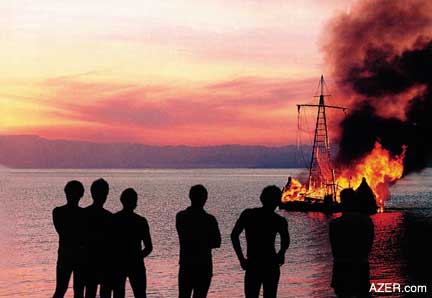crash
Its been a strange couple of weeks: many things have happened, both good and bad but all of them new.
On Monday before setting off for work we heard on the radio that there had been a crash in nearby Silverdale and the northbound carriageway was closed.
The NZ Herald reported the story thus:
Serious crash unit senior sergeant Bill Russell said it appears that a truck heading north was trying to turn into Tavern Road "and clipped a car coming down the road".
Mr Russell said there was a ricochet that caused damage to another car. He said one person was taken to hospital with life-threatening injuries but he hasn't been updated on the person's condition yet. Silverdale station officer Ken Lousley said one person had to be cut from a car and was taken to hospital. full story
Sure enough, almost as soon as we joined the main road, the traffic was crawling. Although the accident had closed the other side of the road cars were slowing down to have a good gawp.
As we passed, a chill ran up my spine. A white car crushed to two-thirds of its normal size straddled the two opposite lanes. The damage was so brutal and so severe that as our eyes met Tracey and I shared the same sombre thought. "Jesus, someone died here this morning."
The crash occupied my thoughts until I got to work and then thought nothing more of it.
A week later I end up at North Shore Hospital requiring surgery on my recently broken arm (trivial snowboarding fall) where the man in the bed next to me turns out to be the driver of that white car - miraculously with nothing more than a broken femur. I am amazed as this man should truly be dead.
His version of events chill me to my very core and as I listen I give silent thanks for sustaining such a minor injury through recreational sport and not something as horrific as a road traffic accident with a truck.
On Monday before setting off for work we heard on the radio that there had been a crash in nearby Silverdale and the northbound carriageway was closed.
The NZ Herald reported the story thus:
Serious crash unit senior sergeant Bill Russell said it appears that a truck heading north was trying to turn into Tavern Road "and clipped a car coming down the road".
Mr Russell said there was a ricochet that caused damage to another car. He said one person was taken to hospital with life-threatening injuries but he hasn't been updated on the person's condition yet. Silverdale station officer Ken Lousley said one person had to be cut from a car and was taken to hospital. full story
Sure enough, almost as soon as we joined the main road, the traffic was crawling. Although the accident had closed the other side of the road cars were slowing down to have a good gawp.
As we passed, a chill ran up my spine. A white car crushed to two-thirds of its normal size straddled the two opposite lanes. The damage was so brutal and so severe that as our eyes met Tracey and I shared the same sombre thought. "Jesus, someone died here this morning."
The crash occupied my thoughts until I got to work and then thought nothing more of it.
A week later I end up at North Shore Hospital requiring surgery on my recently broken arm (trivial snowboarding fall) where the man in the bed next to me turns out to be the driver of that white car - miraculously with nothing more than a broken femur. I am amazed as this man should truly be dead.
His version of events chill me to my very core and as I listen I give silent thanks for sustaining such a minor injury through recreational sport and not something as horrific as a road traffic accident with a truck.


